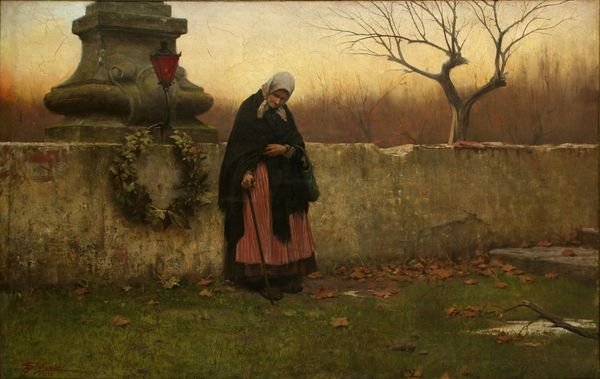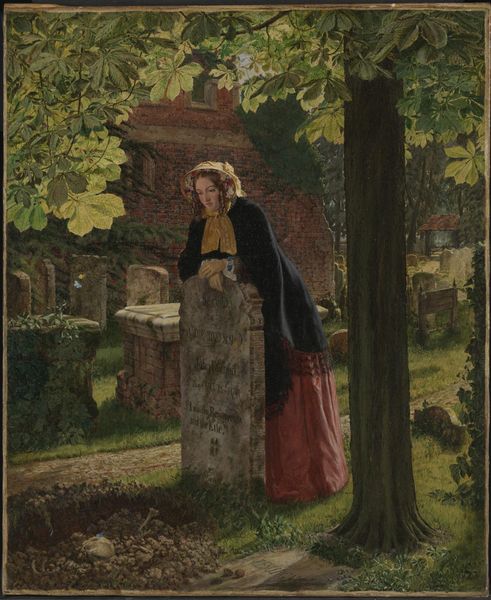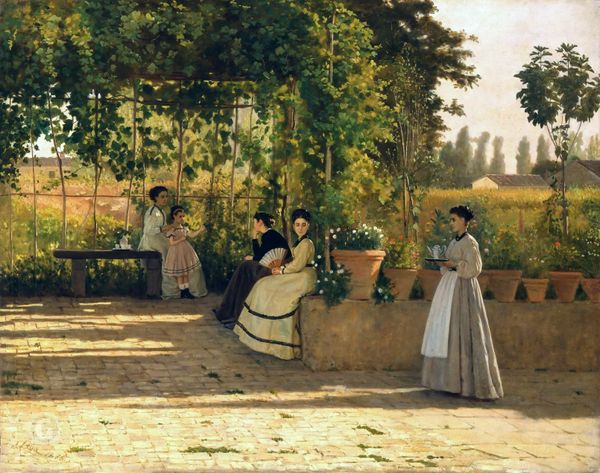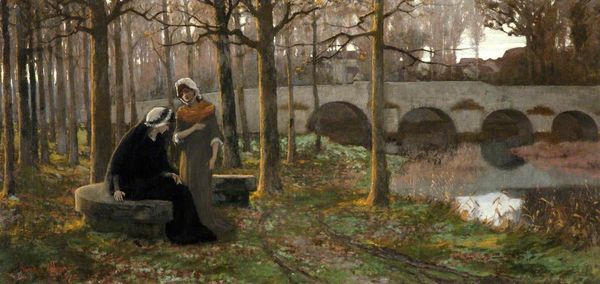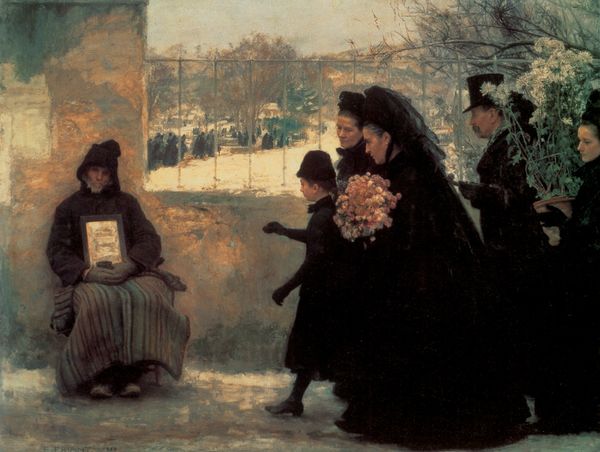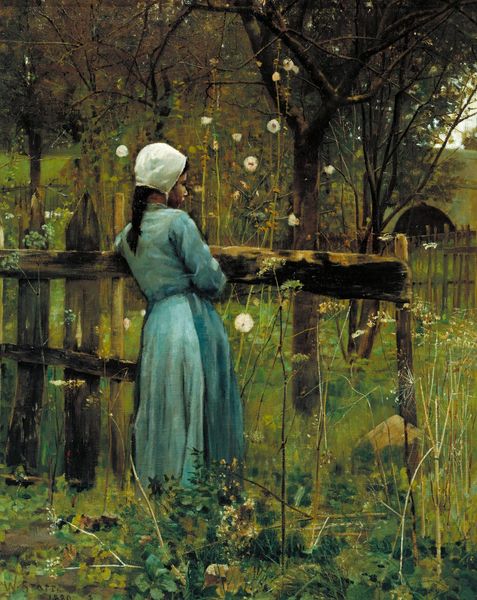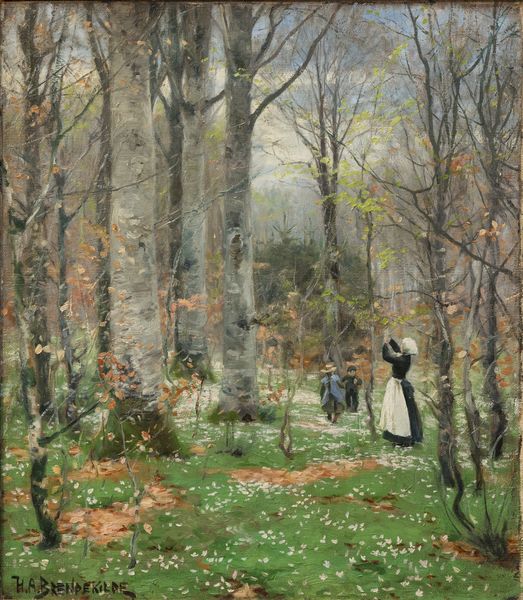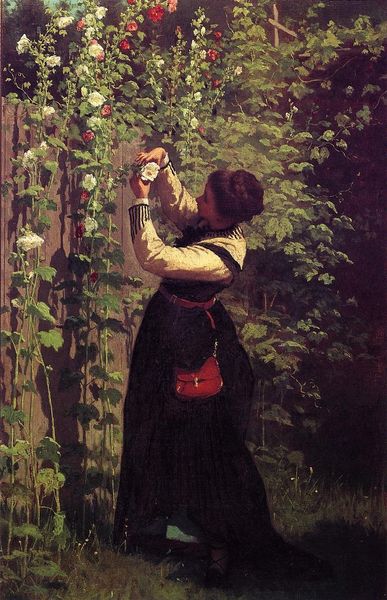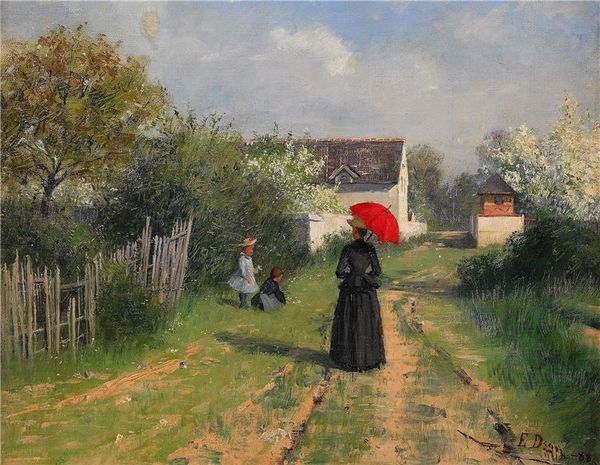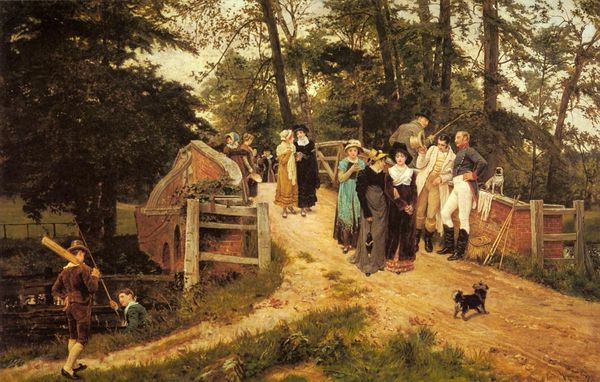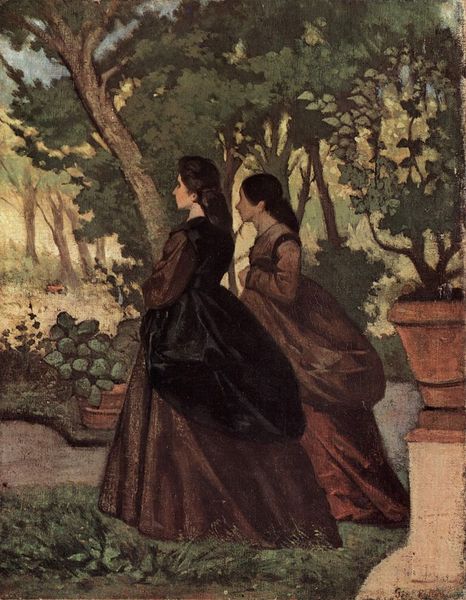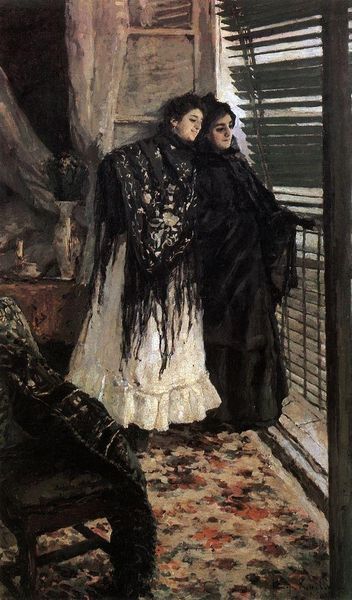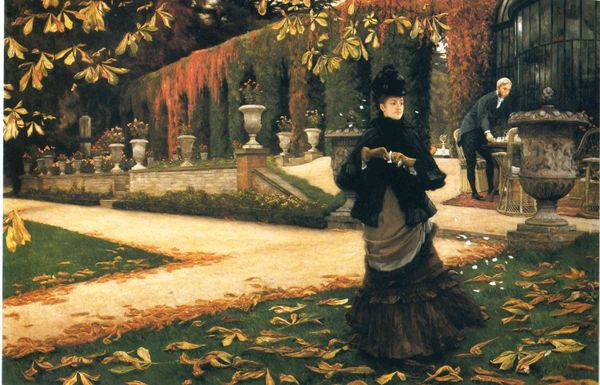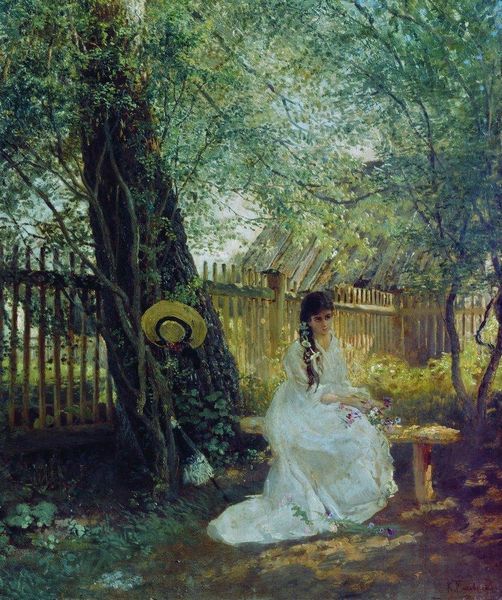
Copyright: Public Domain: Artvee
Curator: Let's take a moment with Albrecht Anker's 1872 oil painting, "At The Cemetery." Editor: Immediately, I'm struck by the somber stillness. The muted tones and the heavy, draped figures create a palpable sense of grief and quiet reflection. Curator: Anker, though known for his genre scenes of Swiss village life, presents here a formal depiction of mourning. Observe the social conventions embedded in the clothing, the veiled faces, signaling a community's visual language around death and bereavement. Editor: Absolutely. And notice how the artist situates these women not just in grief, but within a specific class and gender role. The attire speaks to their status, their expected performance of mourning within this societal structure. Are we meant to consider if it's performance, belief, or survival? Curator: These were questions very much in the air as established traditions met modernization in Switzerland. The growth of cemeteries as managed public spaces played an increasing social role at the time. Anker situates his figures very deliberately in front of a tomb with barely legible text, as a signifier of place but not a personhood. The climbing vegetation suggests life encroaching on death, hinting at resilience and nature's indifference. Editor: The tomb almost serves as a stage then, focusing us as viewers to assess the social roles being acted out in front of us. What about that landscape in the background? The visible monuments lead back to indistinct horizons. There's a journey implied by its path, but an ending to that journey as well. Curator: And, of course, landscape painting itself, since its popularization during the Romantic movement, served as a critical mirror of societal values. Here, in Anker’s hand, landscape underscores a very grounded realism, but touched by social narrative and individual stories of mourning. Editor: Thinking about Anker situating those lives during modernization underscores how genre painting doesn't simply show a scene. It invites critical questions about identity, tradition, and the broader political landscape of loss. Curator: It reminds us how art isn't just a pretty picture, it’s a window into the socio-political dynamics of its time. Editor: Indeed. Hopefully that adds to your appreciation of "At The Cemetery".
Comments
No comments
Be the first to comment and join the conversation on the ultimate creative platform.
